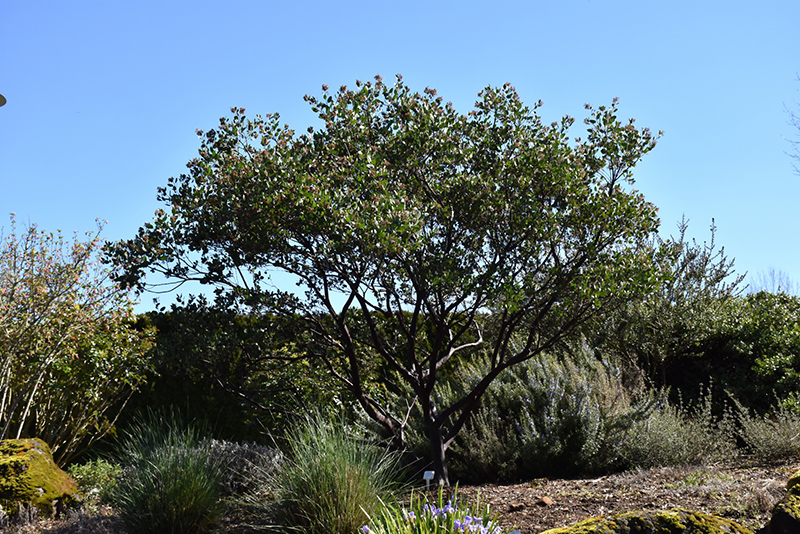Austin Griffiths Manzanita
Arctostaphylos 'Austin Griffiths'
Height: 15 feet
Spread: 15 feet
Sunlight:
![]()
![]()
Hardiness Zone: 7a
Other Names: Arctostaphylos densiflora x manzanita
Description:
An attractive, densely leafed large shrub to small tree; covered with clusters of urn-shaped, pale pink flowers in winter; does not like alkaline soils; a coastal plant, protect from midday sun when planted inland; very drought tolerant once established
Ornamental Features
Austin Griffiths Manzanita is clothed in stunning nodding shell pink bell-shaped flowers at the ends of the branches from early to mid winter. It has forest green evergreen foliage. The glossy oval leaves remain forest green throughout the winter. The peeling burgundy bark and brick red branches are extremely showy and add significant winter interest.
Landscape Attributes
Austin Griffiths Manzanita is a dense multi-stemmed evergreen shrub with an upright spreading habit of growth. Its average texture blends into the landscape, but can be balanced by one or two finer or coarser trees or shrubs for an effective composition.
This is a relatively low maintenance shrub, and should only be pruned after flowering to avoid removing any of the current season's flowers. It is a good choice for attracting birds, squirrels and hummingbirds to your yard. It has no significant negative characteristics.
Austin Griffiths Manzanita is recommended for the following landscape applications;
- Accent
- Mass Planting
- Naturalizing And Woodland Gardens
Planting & Growing
Austin Griffiths Manzanita will grow to be about 15 feet tall at maturity, with a spread of 15 feet. It has a low canopy with a typical clearance of 2 feet from the ground, and is suitable for planting under power lines. It grows at a slow rate, and under ideal conditions can be expected to live for approximately 30 years.
This shrub does best in full sun to partial shade. It is very adaptable to both dry and moist growing conditions, but will not tolerate any standing water. It may require supplemental watering during periods of drought or extended heat. It is very fussy about its soil conditions and must have sandy, acidic soils to ensure success, and is subject to chlorosis (yellowing) of the foliage in alkaline soils, and is able to handle environmental salt. It is somewhat tolerant of urban pollution. This particular variety is an interspecific hybrid.


